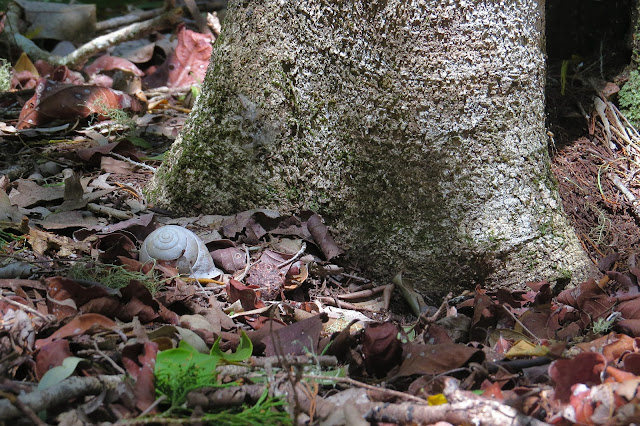I recently spent five nights at the delightful Shelly Beach Motel in Urangan, Hervey Bay. A large portion of each day was spent photographing insects and spiders, some of which I’ve shared on the Wild BNE Facebook page. It wasn’t all invertebrate study though, and I thought I’d share some of my other experiences here.
On my first day, I headed into Vernon Conservation Park, halfway between Hervey Bay and Maryborough. When I arrived, I saw that the tracks were heavily degraded by dirt bikes and illegal 4WD use, and being the school holidays, I knew it wouldn’t be long before such vehicles arrived that day too. I decided to follow some very faint wallaby trails deeper into the park, and I did so just in time, as the roaring dirt bikes showed up just ten minutes later. I appreciated the stringybark woodland that the trails led through, weaving my way through a shrub layer composed of hakeas, she-oaks and grevilleas. The bike noise became distant enough to no longer intrude on my senses, but audible enough to tell me where the main track was.
That afternoon, I went to watch the sunset at Point Vernon. I marched out onto a rocky promontory adjacent to the Gatakers Bay boat ramp, plonked down my camp chair and listened to music as the sun sank lower and the tide came in. I had my binoculars too, but no camera, and gazed admiringly at the pelicans and distant terns. To my great surprise, suddenly a huge, balding old-man head appeared before me in the little inlet—a magnificent green turtle! I held my breath, hoping the giant would resurface, when a different one appeared a little further away. Then another one, and another one, until I realised this inlet was full of turtles. They became a lot more active as the evening crept closer, and when shells appeared at the surface and flippers began to flail around, I realised this was a mating site for them. The whole experience was so wonderful that I returned for an encore the next evening, this time with my camera.
On another day, I headed out to beautiful Dundowran Beach. The tide was in, and the urge to swim and laze in the shade of the wooded foreshore was strong, but I fought it to explore the vine forest there instead. It was a wonderful place, home to sweet yellow robins and bordered rustic butterflies, but I found the bleached, empty snail shells strewn through the leaf litter particularly evocative of this rare habitat’s beauty.
From there, I drove to Burrum Heads and had my breath taken away by the low-tide vista that awaited me. Hervey Bay has one of the biggest tidal ranges I’ve ever seen, and the sandflats that appear during the low tide extend for many miles. This kind of environment can actually be very dangerous if one loses track of the time or the tide’s turn, so I asked the locals for some cautionary advice, then headed out to explore. I had a very relaxing time on my wanderings, until I turned around and saw a bushfire roaring to life just outside of town, possibly stranding me there if the one road in and out was affected. I hurried back to my car and checked the road in question, to find that it was indeed closed. Luckily, thanks to the effort of the local Rural Fire Service, it was only a temporary problem and I was able to leave later that afternoon.
The next day, I headed out into Hervey Bay for an eco-tour with a local company. I chose the tour for its offer of snorkelling amongst coral in the bay, and luckily, I got to fulfil this wish. The tide and visibility wasn’t perfect, but I appreciated the chance to see impressive coral mounds and pretty fish, including a large fringe-eye flathead. We also saw Australian humpback dolphins and a green turtle elsewhere in the bay, and gained an insight into the cultural and historical traditions of the Butchulla people thanks to our indigenous guide. It felt very special to visit the Great Sandy Strait right at the time it was announced that Fraser Island would henceforth be officially known by its Butchulla name of K’Gari.
And speaking of K’Gari! On my last night there, I found myself a spot on a dark, quiet beach at the eastern end of Urangan, and watched the moon rise over the island. It was spectacular! The higher the moon climbed, the more the waters of the strait became etched in silver ripples. I felt a kind of euphoria, much the same way I did whenever I strolled the remarkable Urangan Pier. My grandparents used to love Urangan and Hervey Bay, and I think it’s in my DNA to adore it too. I will definitely return soon.







Corofy LLC We offer Surfactants, Ethoxylates, Performance Chemicals - adding value to supply chain.
ReplyDeleteAlcohol Ethoxylate
Emuslifiers for Agrochemicals
Surfactant for Home and Personal Care